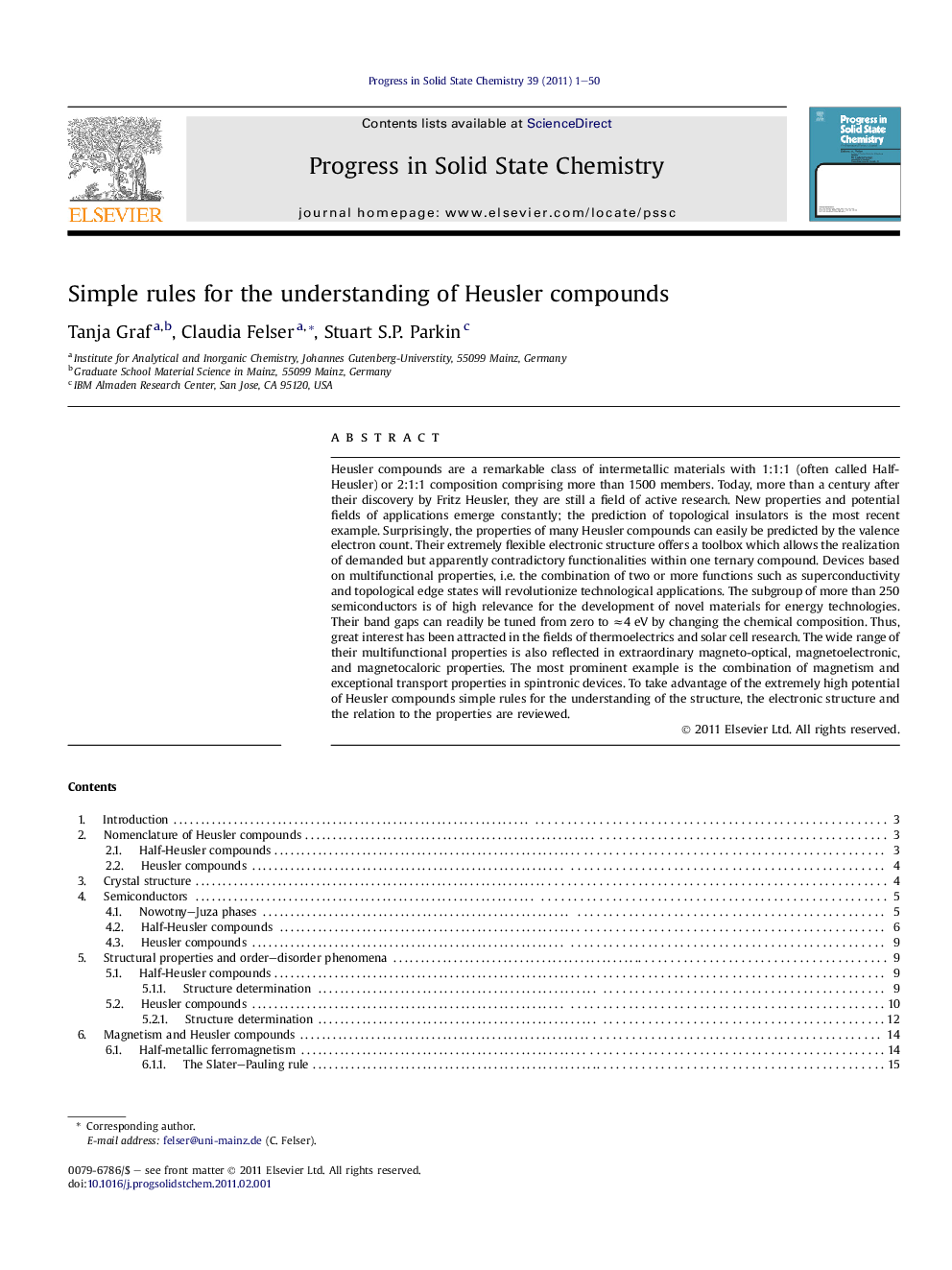| کد مقاله | کد نشریه | سال انتشار | مقاله انگلیسی | نسخه تمام متن |
|---|---|---|---|---|
| 1497848 | 993117 | 2011 | 50 صفحه PDF | دانلود رایگان |

Heusler compounds are a remarkable class of intermetallic materials with 1:1:1 (often called Half-Heusler) or 2:1:1 composition comprising more than 1500 members. Today, more than a century after their discovery by Fritz Heusler, they are still a field of active research. New properties and potential fields of applications emerge constantly; the prediction of topological insulators is the most recent example. Surprisingly, the properties of many Heusler compounds can easily be predicted by the valence electron count. Their extremely flexible electronic structure offers a toolbox which allows the realization of demanded but apparently contradictory functionalities within one ternary compound. Devices based on multifunctional properties, i.e. the combination of two or more functions such as superconductivity and topological edge states will revolutionize technological applications. The subgroup of more than 250 semiconductors is of high relevance for the development of novel materials for energy technologies. Their band gaps can readily be tuned from zero to ≈4 eV by changing the chemical composition. Thus, great interest has been attracted in the fields of thermoelectrics and solar cell research. The wide range of their multifunctional properties is also reflected in extraordinary magneto-optical, magnetoelectronic, and magnetocaloric properties. The most prominent example is the combination of magnetism and exceptional transport properties in spintronic devices. To take advantage of the extremely high potential of Heusler compounds simple rules for the understanding of the structure, the electronic structure and the relation to the properties are reviewed.
Journal: Progress in Solid State Chemistry - Volume 39, Issue 1, May 2011, Pages 1–50